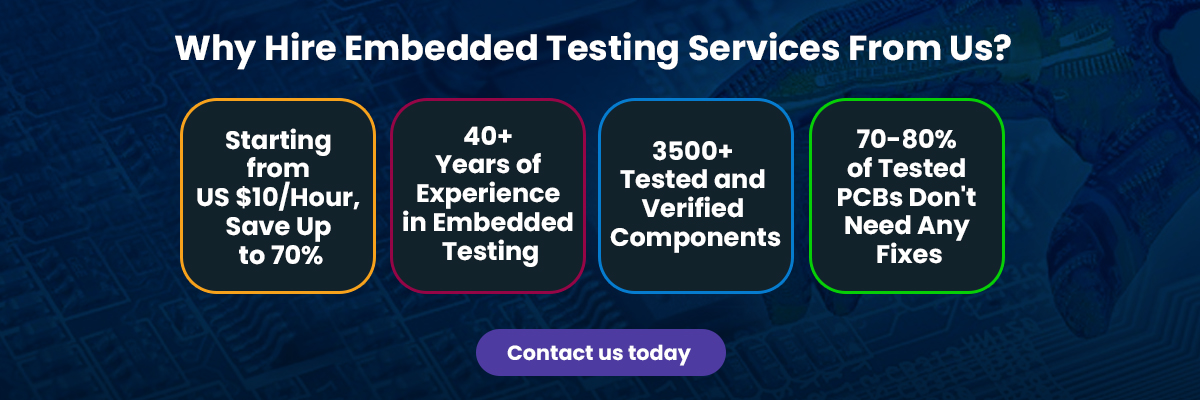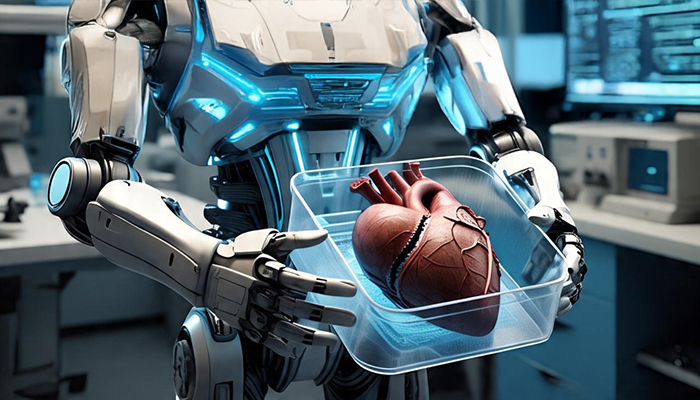Introduction
In our tech-driven world, the need for accurate data is paramount across industries. At the core of this demand is the data logger—an electronic device recording sensor data with precision. Understanding what is a data logger, its advantages, and how to use it is crucial.
Embedded testing plays a pivotal role, in ensuring the accuracy and reliability of data loggers. Join us as we delve into the intricacies of data loggers, exploring their benefits and the indispensable role of embedded testing for optimal performance.
What is a Data Logger?
Have you ever wished for a smart companion that effortlessly gathers and stores information from different sensors? That’s where the data logger steps in – your tech-savvy assistant. Think of it like a helpful friend that measures temperature, humidity, pressure, and voltage, all while running on batteries. Moreover, these versatile data loggers can operate in various environments, making them incredibly useful for a wide range of purposes. Now, let’s uncover the fantastic advantages of a data logger that make it stand out.
Types of Data Loggers
Data loggers come in various types, each tailored to specific needs. They can range from single-input loggers dedicated to measuring one parameter to multi-channel loggers capable of handling different input types simultaneously.
For example, a common multi-channel data logger can measure both temperature and relative humidity, providing a comprehensive snapshot of environmental conditions.
Evolution of Data Loggers
Traditionally, data loggers communicated through USB, but the landscape has evolved with the widespread adoption of Ethernet and WiFi. This evolution has resulted in the development of cost-effective networked loggers, facilitating easy deployment in large numbers.
With features like connection to cloud services and sophisticated software, these loggers provide real-time monitoring and alerting capabilities, significantly enhancing remote access and data management.
Accuracy of Data Loggers
The accuracy of data loggers varies based on the model and application. From basic accuracy suitable for general purposes (around 1-2% full scale) to high-precision units boasting accuracy in the 0.01% full-scale range, data loggers cater to a spectrum of needs. For instance, a temperature logger used for warehouse monitoring might have an accuracy of 1-2 degrees Fahrenheit.
How to Use a Data Logger
Understanding how to use a data logger efficiently is crucial for extracting meaningful insights from your measurements. While the process might seem intricate initially, breaking it down into clear steps simplifies the journey. Here’s a detailed guide on how to make the most of your data logger:
Select the Right Data Logger:
The foundation of successful data logging lies in choosing the right device for your specific requirements. Consider the following factors:
1. Type of Data: Identify the parameters you need to measure. Whether it’s temperature, humidity, pressure, or a combination, ensure the data logger supports your desired measurements.
2. Environmental Conditions: Evaluate the conditions of the deployment location. Some data loggers are better suited for harsh environments, while others excel in controlled settings.
3. Features and Specifications: Examine the features offered by different data loggers, such as sampling rate, memory capacity, and connectivity options. Select a device that aligns with your project needs.
Place Sensors Thoughtfully:
The accuracy of your data hinges on the strategic placement of sensors. Take the following steps:
1. Understand Measurement Needs: Consider the nature of the data you’re collecting. If it’s temperature, place sensors where variations are most likely to occur.
2. Avoid Interference: Ensure sensors are away from potential sources of interference, such as heat sources or electromagnetic fields.
3. Consider Accessibility: If the data logger requires periodic maintenance or data retrieval, place sensors in locations that are easily accessible.
Configure the Data Logger:
Proper configuration ensures that your data logger captures the information you need. Follow these steps:
1. Sampling Rate: Select an appropriate sampling rate based on the dynamics of the measured parameters. Higher sampling rates provide more detailed data but may impact battery life.
2. Data Type: Specify the type of data to be recorded. Whether it’s continuous readings or specific events, configure the data logger accordingly.
3. Additional Settings: Explore and configure any additional settings offered by the data logger, such as alarm thresholds or calibration options.
Deploy the Data Logger:
Deploying the data logger in the field requires careful consideration to ensure optimal performance:
1. Secure Placement: Fix the data logger securely in the chosen location. This prevents displacement due to environmental factors or human interference.
2. Environmental Protection: Shield the data logger from environmental factors like extreme temperatures, humidity, or direct sunlight. Consider protective casings if necessary.
3. Power Options: If the data logger supports external power, evaluate whether this option is more suitable for your deployment than relying solely on batteries.
Retrieve and Analyze Data:
Once the data logger has collected information over the desired duration, it’s time to retrieve and analyze the data:
1. Data Retrieval: Depending on the data logger’s capabilities, use the designated method to retrieve data. This may involve connecting the logger directly to a computer or wirelessly transferring data. You need to understand what is a digital data logger properly to retrieve data.
2. Data Transfer: Take advantage of modern data loggers that simplify data transfer. USB, Ethernet, WiFi, or even cellular connectivity options can expedite the process.
3. Data Analysis: Utilize software tools to analyze the collected data. Identify trends, anomalies, or patterns that can inform decision-making or further research.
Applications of Data Logger
Data loggers, with their versatility and precision, play a pivotal role in numerous industries, offering solutions to diverse challenges. Let’s delve into the applications of data loggers across various fields:
Environmental Monitoring:
Purpose:
Data loggers are instrumental in studying and preserving our environment, providing crucial data for climate studies and ecological research.
Applications:
1. Temperature Monitoring: Track variations in temperature over time to understand climate patterns and assess the impact of temperature changes on ecosystems.
2. Humidity Measurement: Monitor humidity levels to study its influence on plant and animal life, as well as its correlation with temperature fluctuations.
3. Ecological Research: Use data loggers in remote locations to study wildlife habitats, helping conservationists make informed decisions about environmental preservation.
Industrial Processes:
Purpose:
Data loggers are indispensable in industries, contributing to the optimization of manufacturing processes by monitoring and maintaining optimal conditions.
Applications:
1. Temperature Control: Ensure that manufacturing environments maintain the required temperature for processes such as chemical reactions, fermentation, or material curing.
2. Pressure Monitoring: Utilize data loggers to monitor and control pressure in industrial processes to guarantee safety and efficiency.
3. Quality Assurance: Employ data loggers to maintain consistency in environmental conditions, contributing to the quality and reliability of manufactured products.
4. Energy Efficiency: Optimize energy consumption by monitoring and adjusting environmental parameters to meet production requirements without unnecessary energy expenditure.
Transportation and Logistics:
Purpose:
Data loggers play a vital role in the transportation of goods, safeguarding the integrity of sensitive products by monitoring and recording environmental conditions during transit.
Applications:
1. Cold Chain Management: Employ temperature data loggers to monitor and record temperature variations during the transportation of perishable goods, such as pharmaceuticals or food products.
2. Humidity Control: Ensure that goods sensitive to humidity, like electronics or artwork, are transported in conditions that prevent moisture-related damage.
3. Shock and Vibration Monitoring: Implement data loggers equipped with accelerometers to detect and record shocks or vibrations that could impact the quality of transported goods.
4. Real-time Tracking: Use GPS-enabled data loggers to provide real-time location tracking, enhancing security and logistics planning.
Healthcare:
Purpose:
In the healthcare sector, data loggers contribute significantly to maintaining the efficacy and safety of medical supplies, vaccines, and medications.
Applications:
1. Vaccine Storage Monitoring: Ensure that vaccines are stored at the recommended temperatures, safeguarding their potency and preventing vaccine wastage.
2. Medication Storage Conditions: Monitor and record environmental conditions, such as temperature and humidity, to preserve the efficacy of medications.
3. Laboratory Sample Preservation: Utilize data loggers in laboratories to maintain optimal conditions for the storage of biological samples and reagents.
4. Blood and Organ Transportation: Monitor and record environmental conditions during the transportation of blood, organs, or other medical supplies to guarantee their viability upon arrival.
The Role of Embedded Testing and Verification Engineers
Embedded testing and verification engineers are integral to data logger development, ensuring reliability and accuracy. Their role extends beyond routine testing to a comprehensive process, guaranteeing that embedded systems within data loggers are not just functional but also exhibit unparalleled reliability and accuracy.
1. Systematic Testing for Reliability:
Engineers subject the data logger’s embedded systems to tests simulating real-world conditions, ensuring endurance in diverse environments. They learn about what is data logger physics and use it as they need.
2. Accuracy Calibration:
Engineers ensure precise measurements by calibrating sensors and validating the data logger’s internal processing for accurate interpretation and recording of information.
3. Functional Integrity:
Engineers scrutinize the interconnected functionality of embedded systems, ensuring seamless communication between sensors, memory storage, and data processing units.
4. Stress Testing for Robustness:
Engineers assess the data logger’s capabilities by subjecting it to stress tests, identifying potential weaknesses, and ensuring consistent performance under demanding circumstances.
5. Adaptability Verification:
Engineers validate the data logger’s adaptability to different environments, verifying compatibility with various sensors, connectivity options, and data transfer methods.
6. Continuous Improvement and Iterative Testing:
The commitment to ongoing testing and iterative processes contributes to the refinement of existing data logger models and the development of future iterations. This ensures that data loggers evolve to meet changing technological demands and user expectations.
Conclusion
Data loggers stand as indispensable tools, offering precision and versatility across diverse industries. As you embark on your journey to harness the power of data, don’t overlook the critical role of embedded testing. For optimal performance, reliability, and accuracy in your data loggers, explore our embedded testing services. Unlock a seamless experience in data collection and analysis with our expert testing and verification engineers by your side.








